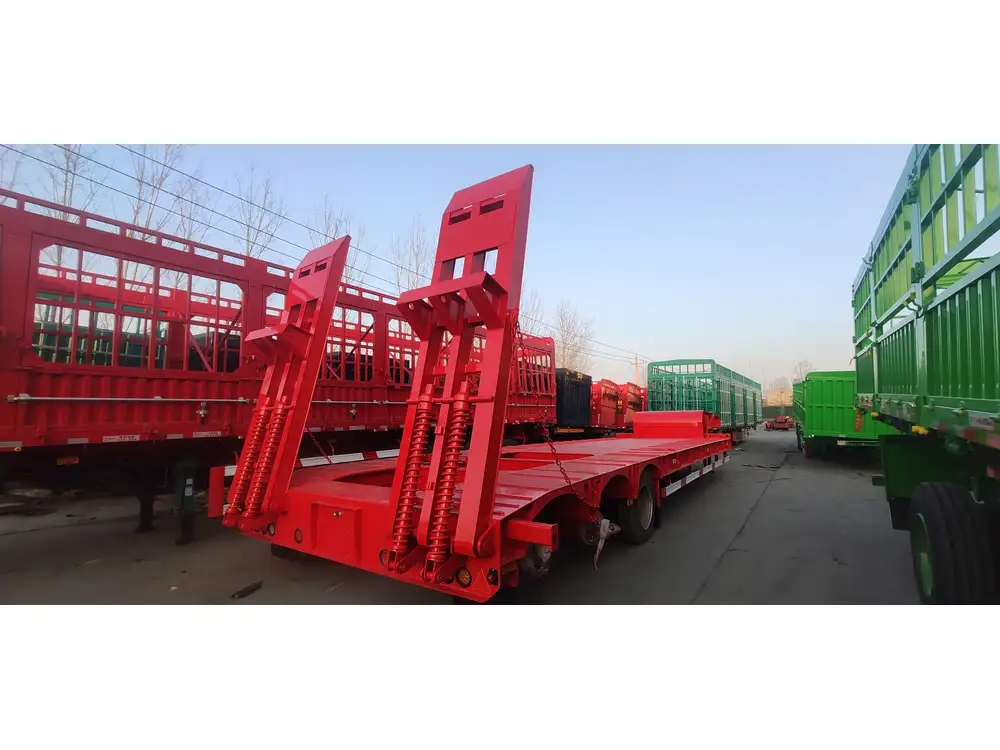Understanding the specifications of semi-trailers is crucial for manufacturers, operators, and logistics managers alike. A key measurement that influences the usability and versatility of semi-trailers is the interior height. This guide delves deeply into what this measurement entails, the various standard dimensions, and how to choose the right interior height based on specific needs.
Importance of Interior Height Measurement
The interior height of a semi-trailer is not just a mere number; it is foundational to determining the trailer’s capacity and efficiency. Here’s why:
- Cargo Versatility: The height dictates what types and sizes of cargo can be transported. Understanding your needs helps in selecting an appropriate trailer.
- Loading and Unloading: Semi-trailers with a higher interior height can facilitate the loading and unloading of taller items, minimizing strain on employees and equipment.
- Regulatory Compliance: Different regions have codes and regulations regarding the permissible height of cargo vehicles. Understanding your trailer’s height aids in ensuring compliance.
Standard Interior Heights of Semi-Trailers
Here is a breakdown of common interior heights for various types of semi-trailers:
| Type of Semi-Trailer | Standard Interior Height |
|---|---|
| Dry Van Trailers | 94 inches (7.83 feet) |
| Refrigerated Trailers (Reefers) | 96 inches (8 feet) |
| Flatbed Trailers | Varies, typically around 60 inches (5 feet) from the ground |
| Specialty Trailers (e.g., Car Haulers) | Varies significantly based on design |

Variance by Manufacturer and Model
While the measurements above reflect standard heights, it is essential to recognize that different manufacturers and models may present discrepancies. For instance, an advanced option might offer adjustable interior heights through specialized designs, allowing for maximum flexibility based on user requirements.
Understanding the Needs for Height Variation
The choice of a semi-trailer’s interior height often boils down to specific operational needs. Here are several factors to consider:
Cargo Type: Is the cargo height standardized or does it vary significantly? High cubic loads like furniture or construction materials require greater heights.
Loading Equipment: Will you be using forklifts or cranes? Assess if they require extra clearance.
Transporting Equipment: Are you transporting vehicles or machinery? If so, ensure the interior height accommodates these dimensions for safe transport.
Regional Regulations: Take into account regional height restrictions that affect the overall vehicle height including load.
Considerations When Choosing Interior Height

Freight Efficiency
Freight efficiency hinges upon optimal use of vertical space. Consider how the interior height aligns with your freight volume. A higher interior allows for stacking, which can be a game-changer for maximizing loads.
Shipping Patterns
Analyze your shipping patterns. If you regularly transport tall cargo such as machinery or building materials, investing in trailers with a taller profile pays dividends in operational efficiency.
Storage Solutions
If your operation includes temporary storage, the height may allow for utilizing vertical space in warehouses or yards, contributing to an efficient logistical setup.

Safety Standards
Adhering to applicable safety standards is vital. Ensuring compliance with regulations related to weight distribution and height not only aids legality but also enhances safety on the road.
Height Measurement Techniques
When evaluating a trailer’s interior height, the following methods can be utilized:
From Floor to Ceiling: Place a measuring tape or laser measurement tool at the floor level to the highest point of the interior ceiling. Document the measurement accurately, as even a small discrepancy can affect load planning.
Consider Load Limits: When calculating usable height, consider the maximum load height required by your products and how this interacts with standard heights.
Enhancing Semi-Trailer Usability

Custom Trailers
For specialized needs, custom trailers may offer tailored dimensions. Partner with manufacturers willing to accommodate your specifications, ensuring that the interior height is optimized to your operational requirements.
Retrofit Solutions
If you already own a semi-trailer, consider potential retrofit solutions such as adjustable platforms or hydraulic systems that can alter the effective interior height to adapt to diverse cargo demands.
Maintenance of Trailer Height
Regular inspections are necessary to ensure that the integrity of the trailer’s structure maintains the interior height specifications. Damage or wear could reduce usability and potentially compromise safety.

Conclusion
In essence, the interior height of a semi-trailer is a pivotal factor driving the functionality and efficiency of transporting various goods. Understanding the significance of this measurement, paired with the ability to analyze industry requirements and adjust accordingly, can lead to strategic advantages in the logistics chain. Whether you are in the market for a new semi-trailer or seeking to retrofit an existing fleet, making informed decisions based on the interior height will undoubtedly contribute to seamless operations and long-term success in your transportation endeavors.



